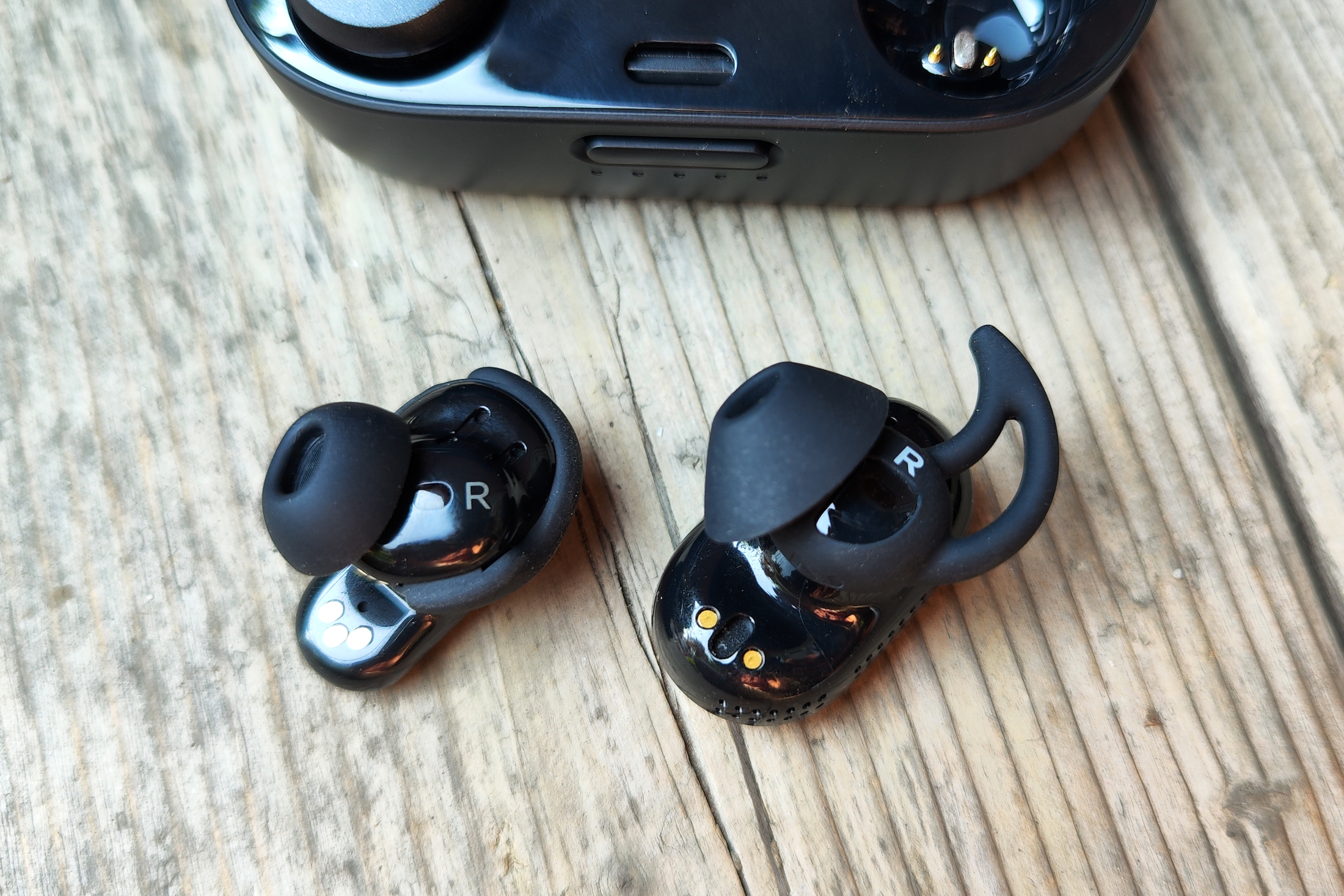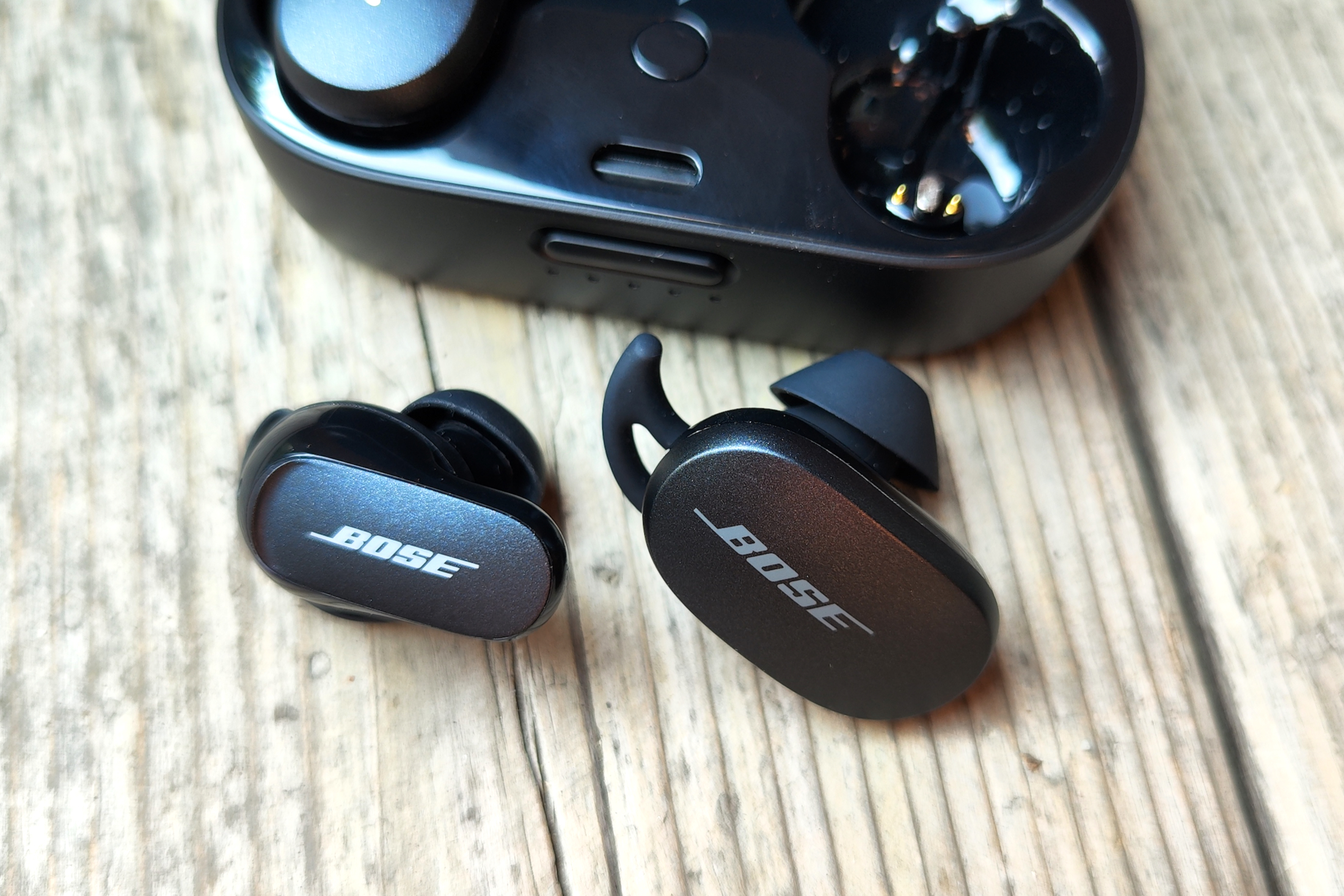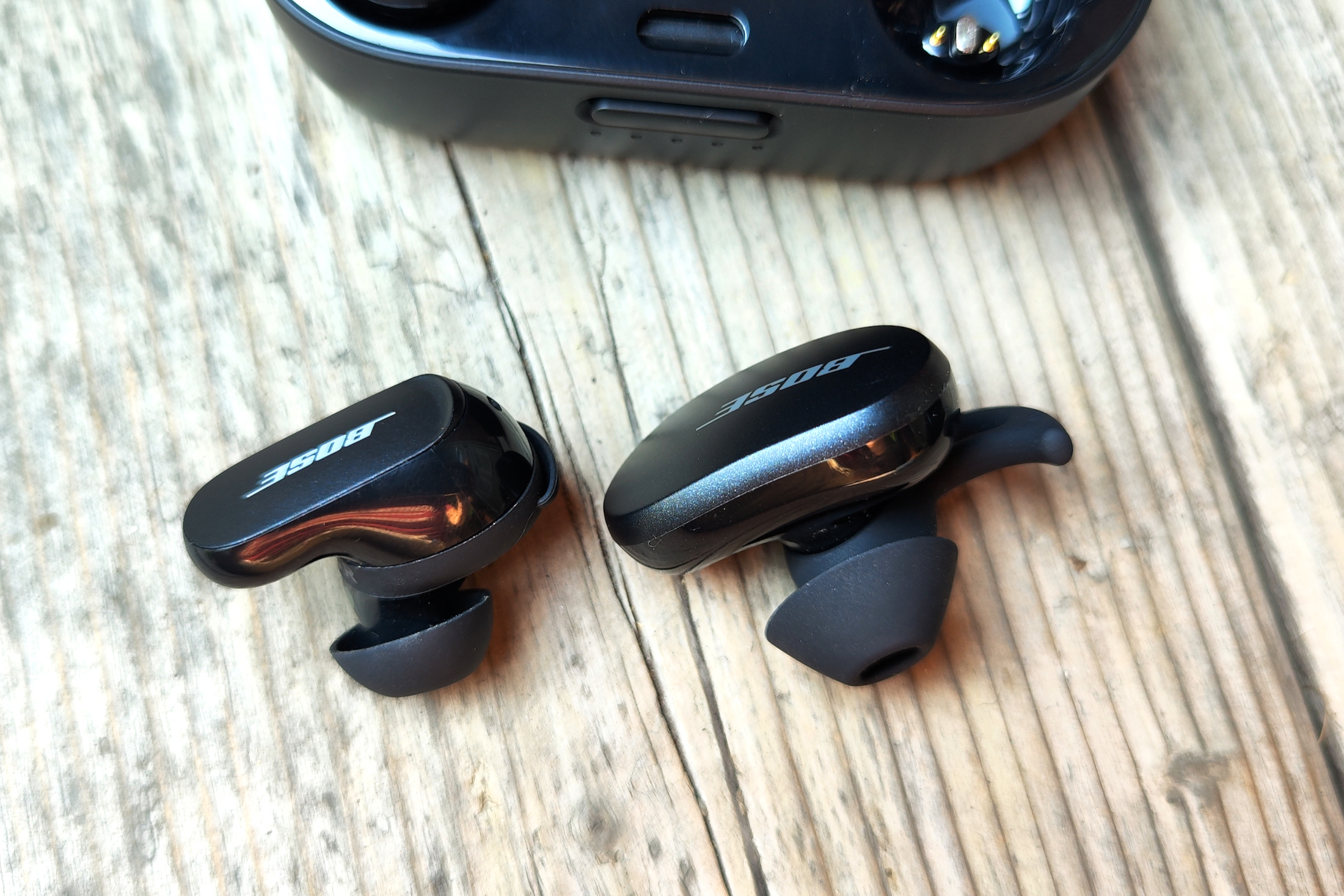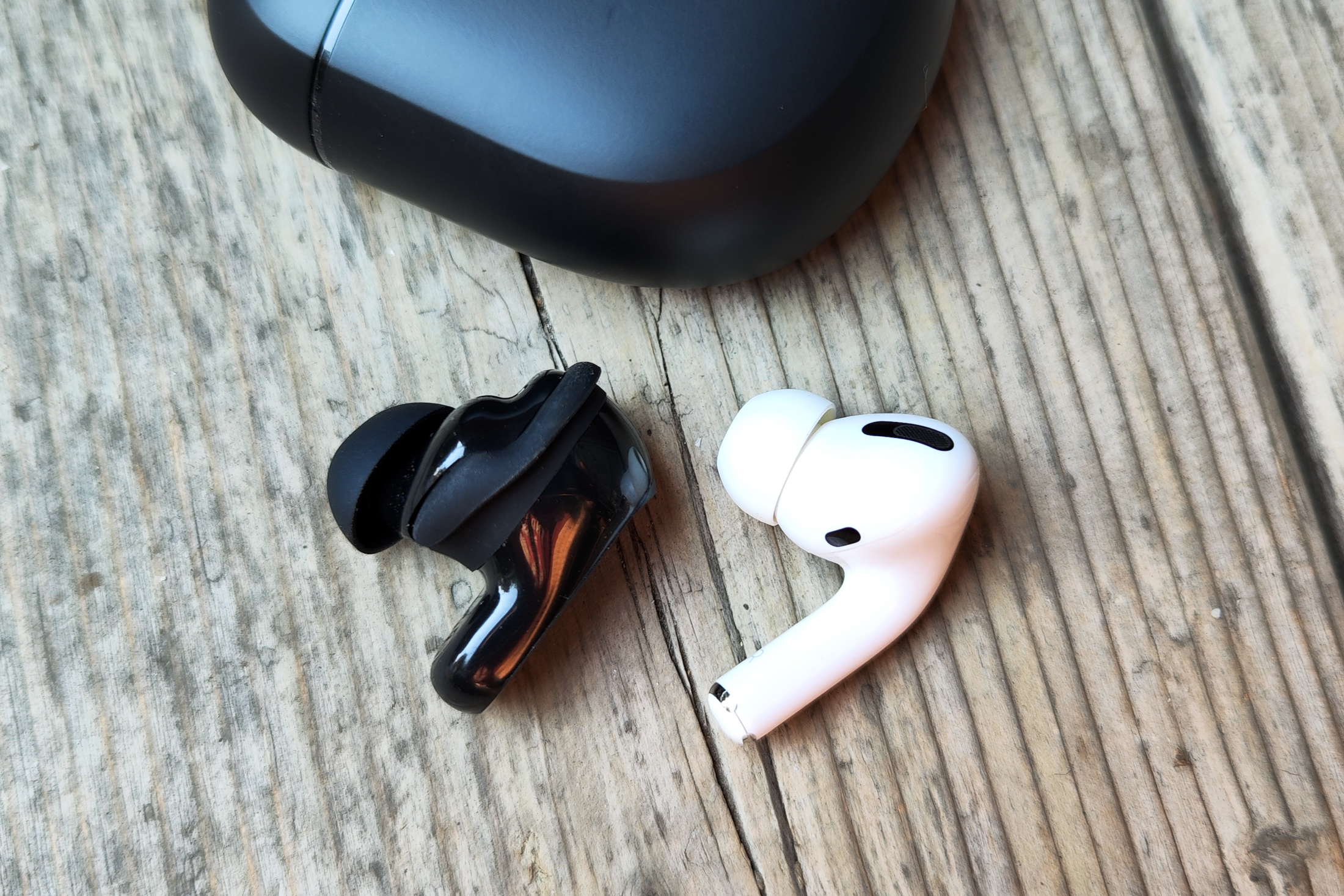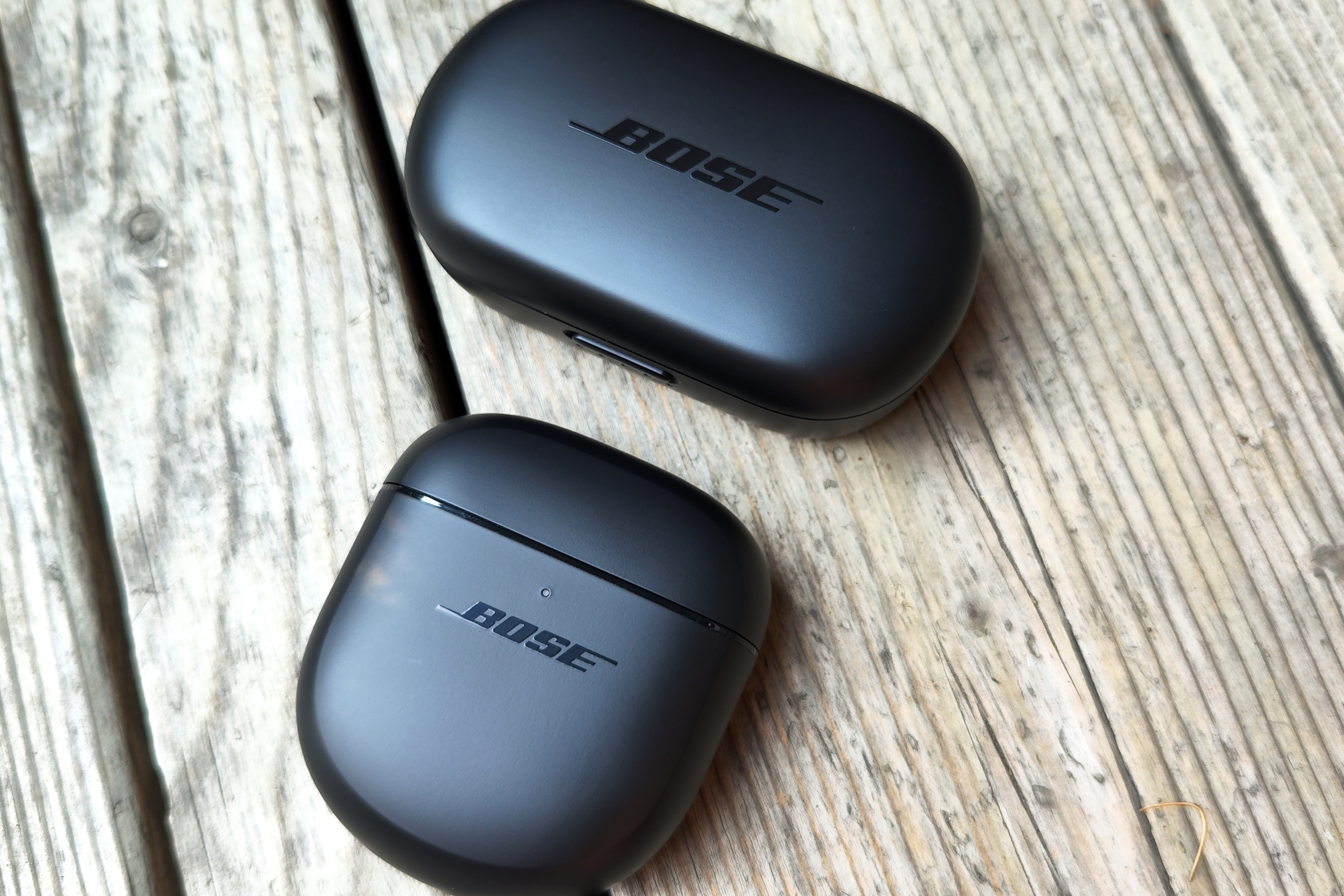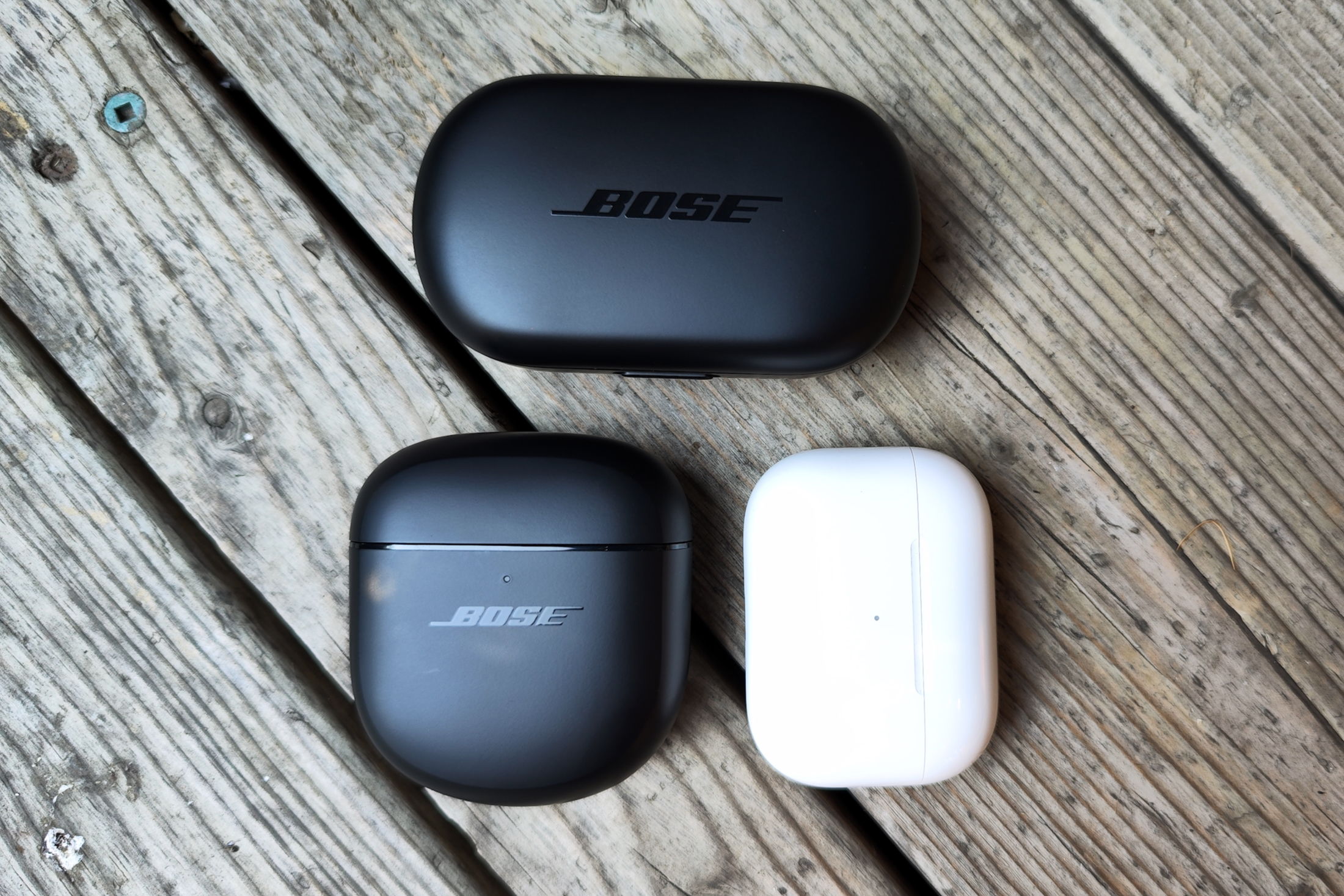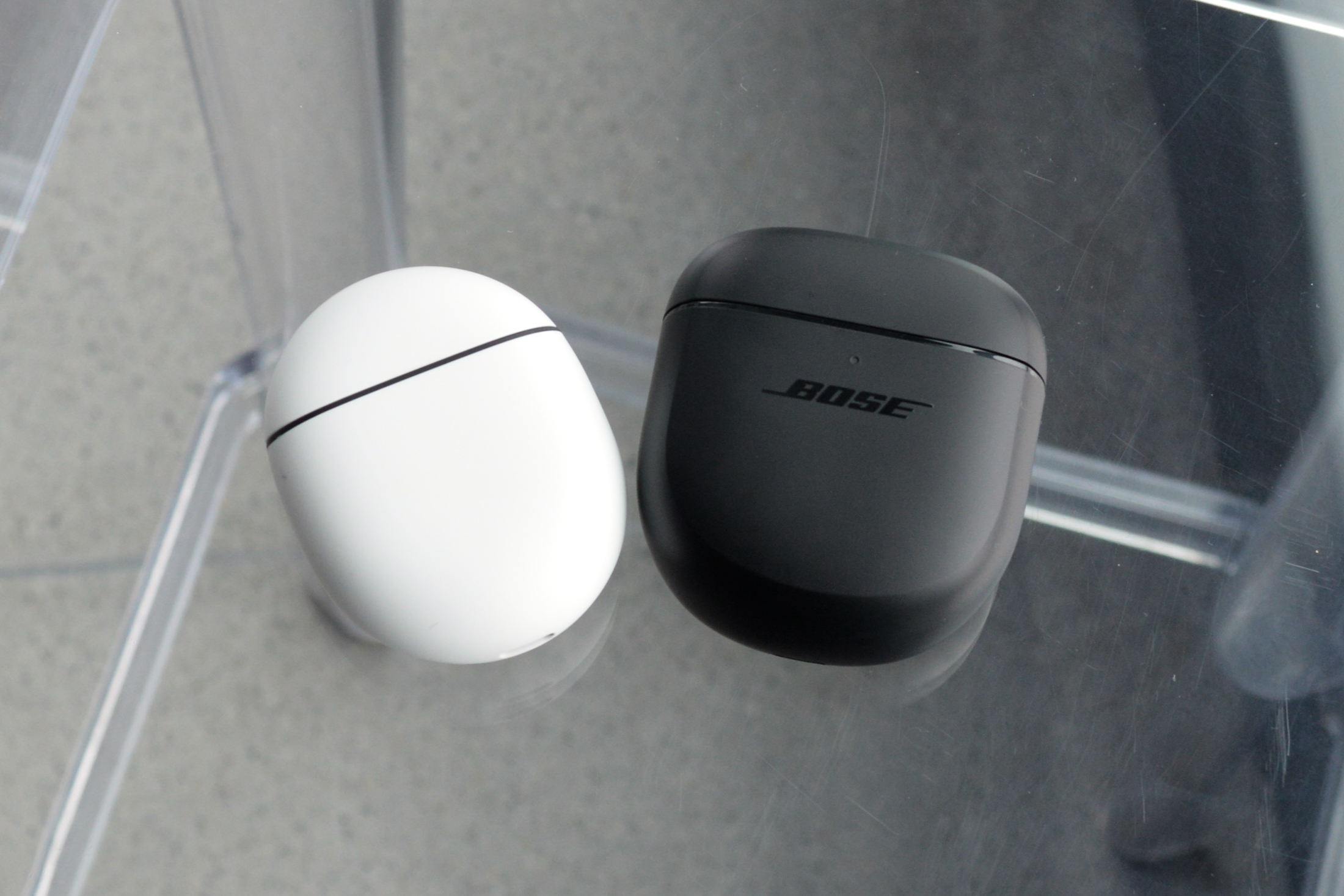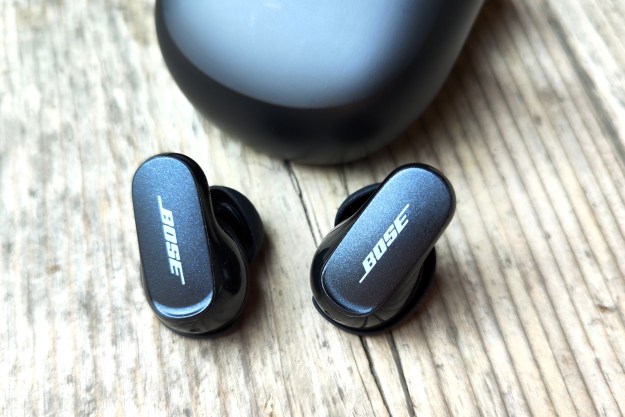
“Quiet and comfortable really are the best words to describe Bose's latest buds.”
- Very comfortable
- Very good sound quality
- Outstanding noise cancellation
- Very good transparency
- Adjustable EQ modes
- No wireless charging
- No Bluetooth multipoint
- Poor outdoor call quality
If there’s one company that has become synonymous with noise cancellation, it’s Bose. And with the company’s latest earbuds — the $299 Bose QuietComfort Earbuds II — Bose is clearly looking to solidify that reputation. It claims that the new wireless earbuds aren’t just better at canceling noise than the first-gen product (which it will still sell while supplies last) — they’re better than any other active noise-canceling (ANC) headphones or earbuds you can buy.
That might be enough to win the company a lot of return business in the form of upgrades, and possibly some new customers too. But there’s more to a set of noise-canceling wireless earbuds than just ANC — a lot more — so let’s see how the QuietComfort Earbuds II stack up, and if they should be your next wireless earbuds.
What’s in the box?
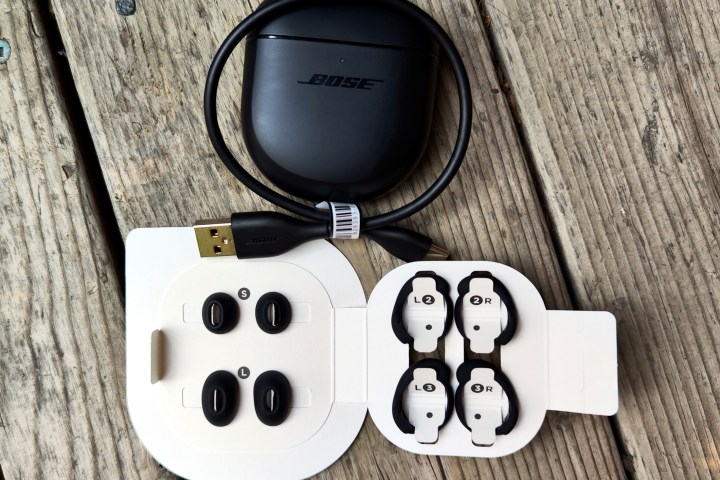
In addition to the QuietComfort Earbuds II (or QCE II), their charging case, and a short USB-C charging cable, you’ll also find two extra sizes of oval silicone eartips and what Bose calls “stability bands” — small silicone gaskets that fit around the body of the earbuds to give a more secure fit.
What you won’t find in the fully recyclable cardboard box is any kind of real instructions. Instead, Bose wants you to download and use the Bose Music app for iOS and Android, which is designed to walk you through the setup, in addition to providing a variety of settings and customizations.
Design
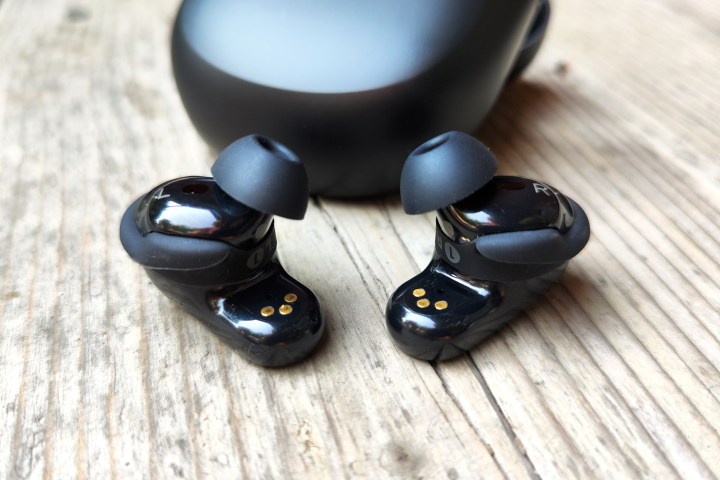
If you generally liked the design of the first-gen QuietComfort Earbuds but found them a bit bulky — as we did when we reviewed them — the new model is a big step in the right direction. Everything about them is smaller and lighter, including the charging case. The large, locking clamshell from the first generation has been replaced with a smaller, rounded, flip-top design that looks a little like the Google Pixel Buds Pro case, albeit still substantially larger.
Without the press-button latch, it’s way easier to open even if you run a slightly increased risk of having it open accidentally. It’s still bulky when compared to the Apple AirPods Pro, Sony WF-1000XM4, Pixel Buds Pro, and Jabra Elite 7 Pro, but you can now (just) fit it in your pocket.
Gone are the StayHear Max eartips, which integrated an oval tip with an internal ear fin — the new design separates fit and stability into two pieces, letting you mix and match until you find the right combination.
Bose kept the lozenge-like shape of the earbuds themselves, so they still protrude from your ears a bit, but nowhere near as much as before, and it also preserved the first-gen’s touch controls — you can tap and swipe anywhere on the elongated outer surface.
Another consistent feature is the IPX4 rating. That means the QCE II are capable of handling sweat or some rain, as long as you wipe them clean after a workout.
With the default tips and stability bands installed, I found them incredibly comfortable.
But the QCE II lack wireless charging, a strange omission considering the first-gen model had this feature and cost less too (Bose introduced them at $279). When I asked why, a Bose spokesperson told me it was in part because of the smaller case design, and because wireless charging doesn’t matter to many people.
Both of those points feel odd, however, not only because products like the AirPods Pro and Pixel Buds Pro manage to do wireless charging in cases that are smaller than the QCE II but also because if wireless charging doesn’t matter, why does every other set of flagship wireless earbuds offer it?
Comfort, controls, and connections
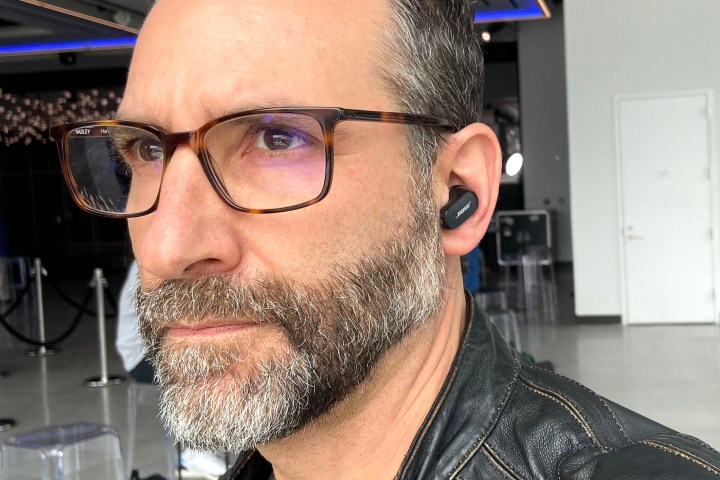
For me, with the default tips and stability bands installed, the QCE II are incredibly comfortable. If you don’t like the feeling of in-ear buds, they won’t change your mind, but they do a superb job of a sometimes tricky balancing act: getting a good seal while preserving a good fit, and staying put when you stick them in.
If you’re not sure about the seal, the Bose Music app has a fit test that will confirm when you’ve got it locked.
Being able to swipe your finger up and down for volume is more intuitive than using a single button.
I took them to the gym, out for walks, did a few video meetings, and generally kept them in place for several hours at a time, and they never bothered me. They aren’t as rock-solid and secure as the ear-fin-based first-gen earbuds, but I’m OK with that — I found the stability bands to be a perfectly acceptable substitute, and they were secure enough for all of my daily needs.
The controls also are very good. I generally prefer physical buttons, but I admit that being able to swipe your finger up and down the QCE II’s surface is a way more intuitive process for adjusting volume than using a single button. Apparently, Apple thinks so, too, as it has added the same feature to its second-gen AirPods Pro.
Bose doesn’t let you modify basic controls like play/pause, track skip forward/back, or call answer/end, but you can decide what the long-press (Bose calls that a shortcut) does on each earbud. You can pick between changing ANC modes and activating your voice assistant.
There is, however, excellent control over the wear sensors. By default, they will auto-pause and resume your music (which works really well) or you can turn them off entirely. You can also choose to enable auto call-answer, so if your phone rings, you can simply insert an earbud to pick up the call.
The QCE II use the latest chips from Qualcomm, with the latest Bluetooth version, and the connection is very stable, well past the 20-foot point indoors and up to 30 feet outside. That’s the good part. The not-so-good (or perhaps just odd) part is that Bose is barely utilizing what Bluetooth 5.3 can do. There’s no support for LE Audio and its corresponding new codec, LC3, there’s no Bluetooth multipoint for simultaneous device connections, and no Google Fast Pair or Microsoft Swift Pair. There is a workaround for multipoint, but it’s not as elegant: the Bose Music app lets you switch between previously paired devices without having to dive into your device’s Bluetooth menu.
Granted, the earbuds’ firmware can be updated, and Bose hasn’t ruled out adding these features in the future. But there’s no word on if or when that will happen.
Sound quality
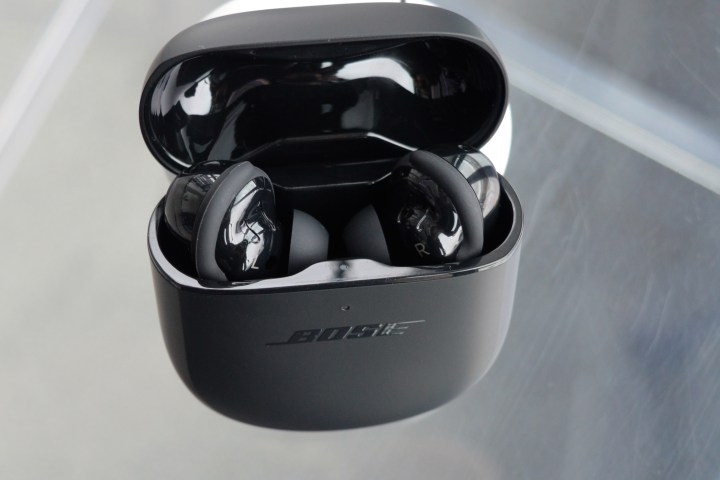
The big new technological innovation on the QCE II versus the first gen is a feature called CustomTune. As soon as you pluck the earbuds from their case and put them in your ears, they perform a nearly instantaneous test of your ears, measuring how they channel sound to your eardrums. According to Bose, this lets the QCE II effectively respond to the small differences in everyone’s ears, every time you wear them, and you don’t have to create an account, go through a listening test, or perform any tasks at all in order to benefit from it. It just happens.
You get four helpful presets (Bass Boost, Base Reducer, Treble Boost, and Treble Reducer), to suit your tastes.
CustomTune is supposed to improve ANC and transparency (more on these in a moment) as well as sound quality.
Does it work? I can’t tell you, and I suspect no one else can either because there’s no way to disable it in order to do an A/B comparison. Should you care? I don’t think so, because the bottom line is that these earbuds sound really good, whether CustomTune gets the credit or not.
As with the first gen, Bose has given the QCE II a fun and vibrant sound signature that balances warm, resonant bass with clear highs and reasonably detailed midtones. I think there have been improvements too (maybe it’s the CustomTune?), with less noticeable distortion at lower volumes. What hasn’t changed is that these buds likely won’t have audiophiles singing their praises — I think you’ll get a more accurate performance from other models like the Sennheiser Momentum True Wireless 3, the Sony WF-1000XM4, the Technics EAH-AZ60, and the Astell & Kern AK UW100.
The fact that Bose hasn’t ventured beyond SBC and AAC codec support reinforces that it’s not after that crowd anyway.
The Bose QuietComfort Earbuds II offer the best noise cancellation I’ve ever experienced.
But what’s new, and what I think makes all the difference, is that Bose now includes the ability to adjust the earbuds’ EQ inside the Bose Music app. You get four helpful presets (Bass Boost, Base Reducer, Treble Boost, and Treble Reducer), but you can also modify each of these (or start from a neutral EQ) to suit your tastes using a three-band set of sliders. Unfortunately, there’s no way to save these personalized settings, something I think Bose should consider adding now that it has come this far.
With these adjustments, you no longer need to just accept the factory tuning, so bass-heads get more of what they like, while fans of podcasts or diva vocalists can emphasize the sounds they prefer. I still found myself sticking with the neutral EQ most of the time, but it was nice knowing I could switch it up if the mood struck me.
Noise cancellation and transparency
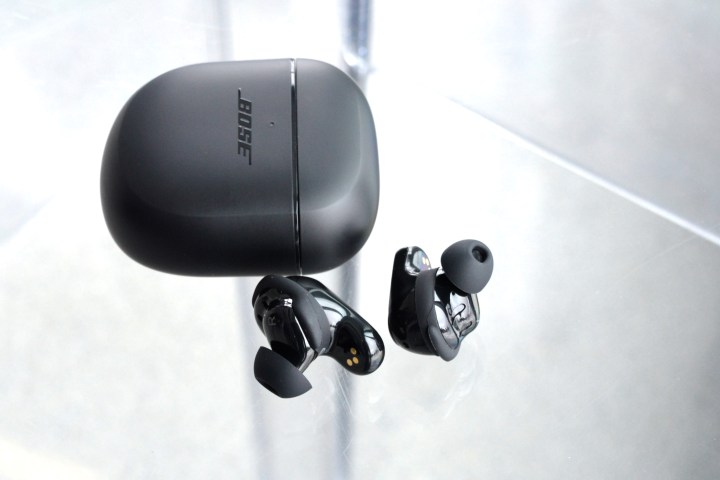
Apple’s second-gen AirPods Pro weren’t available at the time of this writing, so it’s possible I will need to re-evaluate this statement. But as of right now, the Bose QuietComfort Earbuds II offer the best noise cancellation I’ve ever experienced. Better than the first-gen QC Earbuds, better than the first-gen AirPods Pro, and better than Sony’s flagship WF-1000XM4 earbuds and WH-1000XM5 headphones. It’s truly outstanding.
While on a short flight from New York City to Toronto aboard a De Havilland Dash 8 — a pretty noisy twin turboprop aircraft — I got a chance to put the QCE II in a direct comparison with the Sony WH-1000XM5 and the recently released Google Pixel Buds Pro.
The Sony offering, while excellent for a set of ANC headphones, couldn’t touch the QCE II. They let in what I perceived as roughly twice the amount of sound. The Pixel Buds Pro faired better, as you might expect from earbuds that totally seal your ear canals, but they too couldn’t quite obliterate those engines the way the Bose could.
That was before trying to play music. Once I added in some tunes, even at moderate volumes, I was blissfully unaware of any cabin sound at all. Curiously, you can sometimes detect the ANC algorithms doing their magic as new sounds become part of your environment — they may be more noticeable at first but then recede into the background over the next second or two.
As awesome as the ANC is, you might want to take advantage of the ability to reduce its power under certain circumstances. First, at maximum strength, I found that I was aware of the “sucking” sensation that some folks are sensitive to. Backing it down a level or two eases that feeling. Second, if you’re already in a relatively quiet place and you’re not listening to any music or other content, you will hear a slight background hiss.
Transparency mode, or “aware” mode as Bose calls it, also is very good. It still falls just shy of the not-wearing-any-earbuds sensation you get from the first-gen AirPods Pro, but it’s perfectly capable of letting you hear the outside world. With Bose’s optional ActiveSense system, any sudden loud sounds that occur while you’re in aware mode will be automatically reduced. This can save your hearing, but also your heart rate — as I was walking past a construction site last week, a sudden, very loud bang made me almost jump off the sidewalk. I wish I’d been wearing the QCE II.
A big improvement over the first-gen is the ability to cycle between ANC and aware modes without going through a third mode. You can still do this if you want — the Bose Music app actually lets you define up to four modes of noise cancellation — but you don’t have to,
Call quality
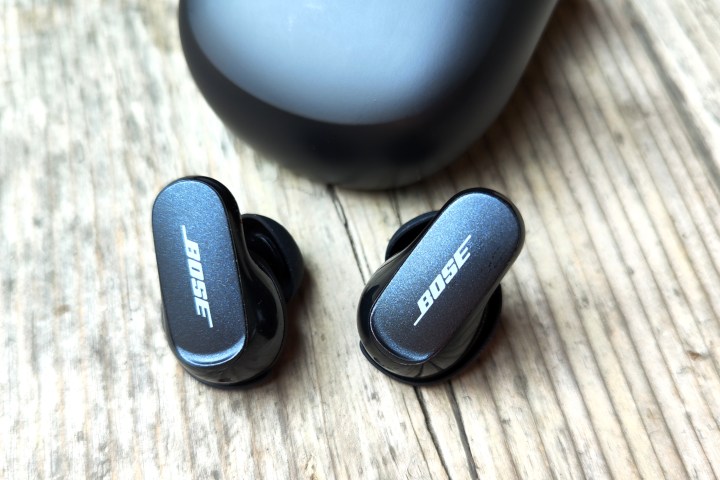
Before I discuss the QCE II’s call quality, I need to address what we said in our original review of the first-gen earbuds, because it needs some context. When Caleb Denison performed his call quality test of the QCE, he did it indoors only. At the time, it seemed like the right, ahem, call.
And when I tested the QCE II for this review, I also found the indoor call quality to be excellent. However, I then took them outside and repeated the test, with very different results. Outside, depending on the amount of noise from traffic or wind, your voice can sound distant, compressed, and at times very difficult to hear. Worse still, those background noises are still quite audible.
I was surprised by this (especially before I realized Caleb’s comments were based on indoor usage) so I grabbed the first-gen QCE buds and took them outside as well. They performed more poorly than the second-gen, so at least Bose has achieved some improvement in outdoor quality, but certainly not enough that I can recommend them for outside use. In fact, I’m not sure they can be reliably used for any situation with a lot of background noise — a pretty big disappointment given both their price and their superb ANC.
Battery life
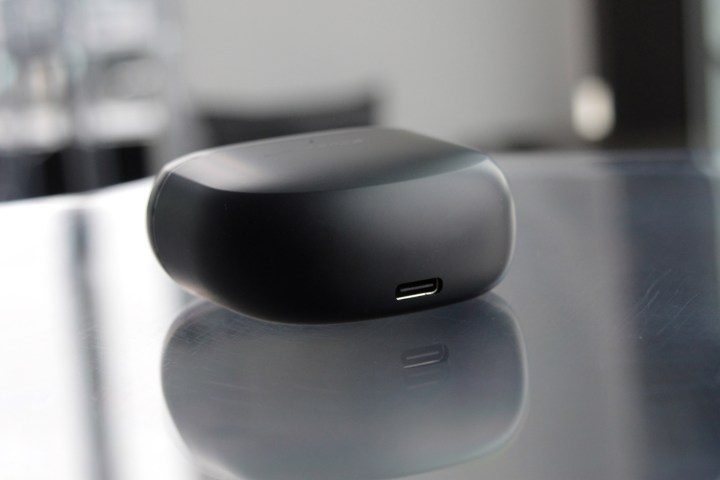
Historically, Bose hasn’t placed a heavy emphasis on battery life. The company’s flagship Noise Cancelling 700 Headphones only get 20 hours of use (placing them near the bottom of the headphone heap along with the AirPods Max) and the first-gen QC Earbuds only possessed up to six hours per charge and a total of 18 hours when you included their charging case capacity.
There hasn’t been any change on the earbuds’ side of the equation (the QCE II still only get up to six hours) but the charging case now holds three full charges instead of two, for a total of 24 hours, which at least brings them into AirPods Pro territory for total time.
But strangely, it actually takes longer now to quick-charge them: 20 minutes will buy you two extra hours, whereas, on the first-gen, that only took 15 minutes.
The bottom line
The Bose QuietComfort Earbuds II are an updated set of wireless buds that absolutely deliver on the two promises that Bose makes right in the product name: They are very comfortable and supremely quiet — quieter than anything else out there. And maybe that fact alone justifies their higher $299 price, but their lack of now-common features like wireless charging and Bluetooth multipoint, plus disappointing outdoor call quality prevents them from earning our unqualified Editor’s Choice rating.
Editors' Recommendations
- Bluetooth on Sonos’ new Era speakers isn’t what you think – it’s better
- What is Sonos? The speakers, app, and everything you need to know about wireless music
- The first Roku-made televisions are now available at Best Buy
- Sonos’ new Era 100 and Era 300 wireless speakers go all-in on spatial audio and Bluetooth
- LG’s new XBoom XL7 and XL5 speakers offer a portable sound and light show

